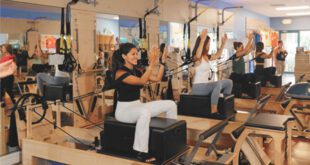By Janice Martin, owner of Senior Liaison of Central Florida Inc.
 LONG TERM CARE INSURANCE is the best resource to reduce the cost of senior living. Most require that you need assistance with at least two Activities of Daily Living which include bathing/showering, dressing, hygiene/grooming, transferring (i.e. from a bed to a chair), toileting/incontinency, assistance with feeding. Medication management and cooking are NOT considered ADLs.
LONG TERM CARE INSURANCE is the best resource to reduce the cost of senior living. Most require that you need assistance with at least two Activities of Daily Living which include bathing/showering, dressing, hygiene/grooming, transferring (i.e. from a bed to a chair), toileting/incontinency, assistance with feeding. Medication management and cooking are NOT considered ADLs.
There may be an elimination period until benefits begin and every policy is different; however, most are 90 days. During this time, you must pay privately before benefits begin. Some will pay for in-home care which may be used toward the elimination period. This is an effective way to utilize your policy so you can move to a community and immediately use your benefits. It is important to review your policy to understand your specific benefits and limitations.
In most cases, if you do not use your policy, you have lost your investment! Too often, many people who desperately need care put off receiving the benefits because they insisted on staying in their own home. Once approved for benefits, the premiums stop and may pay for most, if not all, of your stay thereby costing less than staying in your home.
LIFE INSURANCE POLICIES. Some policies are designed with a dual purpose as a death benefit or to pay for long term care. The entire amount can be used for long term care. If some or none of it is used for long term care, the remaining money is used as a death benefit. There is no elimination period, and you can use it along with your own income to help extend the payments.
VETERAN’S AID AND ATTENDANCE is an often overlooked need’s-based benefit that is available for eligible Veteran’s and/or their surviving spouse and must meet ONE of the following conditions:
• Served at least 90 consecutive days of active service including at least one day of active service during a period defined below and need assistance
with Activities of Daily Living.
• Be bedridden
• Be at least 65 years old and
• Be a resident of a long-term care community
The Veteran must have served during the following dates with an honorable discharge:
• World War II – December 7, 1941 – December 31, 1946
• Korean War – June 27, 1950 – January 31, 1955
• Vietnam War – November 1, 1955 – May 7, 1975 – This is the only time when a Veteran must have served in-country in Vietnam
• Vietnam War – August 5, 1964 – May 7, 1975 – Veteran did not need to serve in country
• Persian Gulf War – August 2, 1990 through a date to be determined
Aid and Attendance is a monetary “add on” to the Basic Veterans / Survivors Pension. The amounts for 2025 listed below are the maximum monthly benefit amount a Veteran or surviving spouse may be entitled to.
• Veteran with no spouse or dependent child – $2,358
• Veteran with a spouse or dependent child – $2,795
• Two Veterans married to each other (one qualifies for A&A) – $2,795
• Two Veterans married to each other (both qualify for A&A) – $3,740
• Surviving spouse with no dependent child – $1,515
• Surviving spouse with a dependent child – $1,808
It may be possible for an individual who served in the Reserves or National Guard to qualify. The basic training that a reservist or somebody in the National Guard would go through doesn’t constitute active duty. However, if they are called up after that either immediately or down the road, that can enable them to qualify.
In 2025, the net worth limits to receive this benefit is $159,240. This includes savings and checking accounts, mutual funds, stocks, and vacation homes. The primary home and car do not count towards the limit. There are programs to protect your income and assets, allowing you to qualify. Always speak with an attorney to learn more before assuming you don’t qualify!
There is a 3-year look-back period for assets that have been gifted or sold for less than fair market value to avoid the maximum net worth limit. There is a penalty that may be up to 5 years before they are eligible to receive benefits. However, if they are able to get the gifted item back, there will be no penalty period.
You must have a copy of the Veteran’s DD214 to apply. If it’s lost, the VA can assist in getting a new one, but it will delay the process.
THE MEDICAID WAIVER is another needs-based benefit for an individual with an income in 2025 less than $2,901. For married spouses both applying, it is $5,802. If one spouse remains home and needs some of their spouses income to survive, there may be something called “Spousal Diversion” that can help.
The same qualifiers apply as Aid and Attendance (highlighted above). However, there is a 5 year look back for Medicaid.
There are only a few communities that accept the Waiver. Most communities have two fees – the room rate, which may be shared or private, and the care fees. However, the waiver only applies to the care. The individual will still be responsible for their room rate, which sadly often exceeds their income. There are different providers for the waiver and each facility has a different contract with some or all of them and the amount of the benefit.
The Waiver is a State program and is not reciprocated from one state to another. Residency must first be established before starting the process from the beginning.
Aid and Attendance is a Federal program and applies to all US States and can be used for payment in all assisted livings.
In a few circumstances, both programs can be used together. It is important that you get help from a professional, or attorney for the application process for either program. It can take several months to be approved, depending upon the circumstances. However, the benefits may be retroactive to the date of the application.
Janice Martin is an author, educator, and specialist on senior living options and the owner of Senior Liaison of Central Florida Inc. She assists families in locating senior options and communities and has written “The Complete Guide to Assisted Living: Everything You Need to Know Before, During, and After a Move” available on Amazon.com in paperback and eBook. For more information or a schedule of upcoming events on how to have a successful transition to senior living, call 352-477-1866 or visit www.seniorliaisoncfl.com.
Senior Liaison of Central Florida
352-477-1866 | seniorliaisoncfl
seniorliaisoncfl@gmail.com
 Central Florida Health and Wellness Magazine Health and Wellness Articles of the Villages
Central Florida Health and Wellness Magazine Health and Wellness Articles of the Villages



